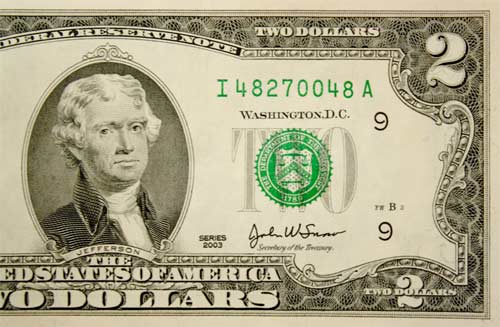“I Want My Two Dollars!”
Weird S.B. Demands a Refund

Any ’80s film junkies out there will immediately recognize the title of this column as the immortal words of the paperboy who pursues hapless Lane Meyer, played by John Cusack, in Better Off Dead. Two dollars, a seemingly insignificant sum, is sufficient motivation for the paperboy to make Lane’s life a living hell – the nightmarish sequence in which Lane’s pursued by several bloodthirsty paperboys at once is an object lesson in paying bills on time, no matter how small they may be.
While paperboys may not be the biggest worry faced by Santa Barbarans – particularly since newspaper subscriptions have so spectacularly declined in the area – the principle is applicable to almost every organization providing services to those of us who call Santa Barbara home: The smaller the fee, the more difficult your life will be if you don’t pay up.
UCSB, for example, has a two dollar fee of its own, one which some recent graduates find almost unbearably offensive. UCSB’s Web site estimates the expenses incurred by an undergraduate residing off-campus for the 2008-2009 school year at $23,878. That includes transportation, housing, and “personal expenses,” but just school fees alone, without books, add up to $8,573. Just fees paid directly to the campus, then, will reach $34,292 over four years, without accounting for the inevitable fee hikes to come.
The aforementioned two dollars, not included in the above figures, is collected for postage – to mail a new graduate’s diploma. Congratulations, you’ve paid us an extraordinary sum of money. Now pay us to let you prove it.
The university is not, of course, the only local institution to charge bizarrely petty fees whenever and however it can. Anyone not in the lucky minority of residents whose utility bills are paid by someone else can attest to the fact that Southern California Edison has transformed the inexplicable fee into an art form – the typical energy bill is more enigmatic than the Mona Lisa smile.
My current bill, as an example, includes a $.12 charge for nuclear decommissioning, a “DWR bond charge” of $1.01, a $1.33 “public purpose programs charge,” and a fee of $1.22 for “competition transition.” While these fees are generally percentages based on usage and will vary somewhat from household to household, everyone pays them whether they understand them or not.
The competition, it seems, must transition and we foot the bill.
Not that there’s anything wrong with fees. Paying them keeps the lights on, funds nuclear decommissioning, apparently, and accomplishes all kinds of useful tasks. But it would be wonderful if just one of those fees paid for someone to explain all the other fees – even if it’s an angry paperboy.



